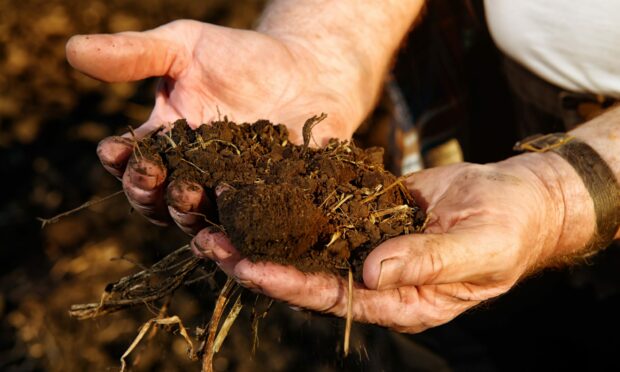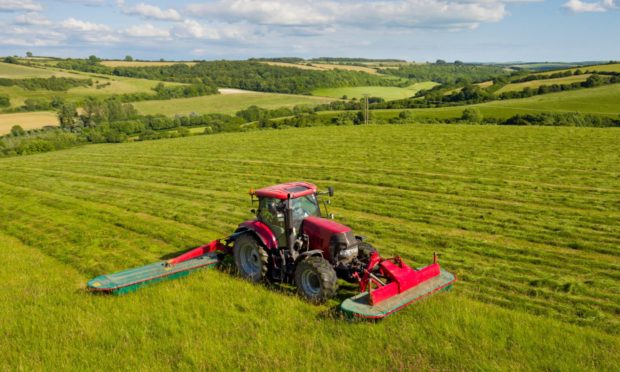Farming’s carbon footprint is in the news again with the publication this week of the Farming for 1.5 Degrees panel’s final report.
It sets out a route for Scotland’s farmers to make a 55% reduction in greenhouse gas emissions by 2045, demonstrating that farming can offer a solution to climate change providing we farm appropriately.
The panel’s findings and recommendations have much in common with former Rural Economy Secretary Fergus Ewing’s farmer-led sector reports published earlier this year, and our policymakers should waste no time in using these reports to fill the post-2024 rural policy void.
There is also another piece of equally significant carbon related farming news this month which has gone largely unreported: Clive Bailye, an arable farmer from Staffordshire, has become the first UK farmer to sell carbon credits for the carbon he has locked up long-term in his soils.
While he has known for years that his system of regenerative farming was providing a public good in the form of soil carbon sequestration and thus mitigating climate change, this is the first time that claim has been verified by an independent organisation – ISO-certified Gentle Farming – meaning those carbon credits can now be sold.
The significance of this independent verification of sequestered soil carbon is that our policymakers should now have no doubts around the ability of regenerative farming to offer a unique solution to climate change.
While this platform of verification and trading of soil carbon is currently aimed at arable farmers and quantifies ‘regenerative farming’ for the first time, there are plans to develop it further to include grazed grassland which may be significant for Scotland.
The ability of regenerative farming to sequester carbon is impressive.
Farmers like Clive Bailye are locking up 2-5 tonnes of CO2 equivalent per hectare per year.
That is a rate faster than commercial Sitka Spruce plantations, but without the associated environmental damage and with the added benefit of offering immediate long term carbon sequestration.
In contrast to trees which take 15 years or more to reach net carbon sequestration and then only retain that carbon until the wood rots or is burnt, a change to regenerative farming offers immediate soil carbon sequestration which can be retained indefinitely.
If all our farmers were to adopt the principles of regenerative farming and focus on soil carbon, agriculture could immediately be transformed from being one of the biggest emitters of greenhouse gases to our biggest carbon sink.
Farming would become the silver bullet solution to climate change, which some soil scientists have been talking about for years. There would be huge benefits to farming’s public image and increased public funding to support the sector.
Farmers tend to be traditional, so that change will not happen overnight.
The mindset of regenerative farming is different; some techniques are different such as establishment of crops and weed control without ploughing or cultivations, but there are traditional elements like crop rotations which our grandfathers would recognise.
The change might be gradual but it should be possible, which seems to be the underlying message in the Farming for 1.5 Degrees report.
More controversial is Clive Bailye’s decision to sell his carbon credits, deemed by some to be risky due to the requirement to maintain the soil carbon for a certain number of years, depending on the contract.
However, that is similar to the practice in forestry to sell carbon credits at planting with a commitment to maintain the plantation for its life expectancy.
I would argue that an undertaking to maintain soil carbon is a less risky business than an undertaking to maintain forestry which is at risk from pests, disease and wind blow.
Furthermore, farmers thinking about selling carbon credits make the valid argument that they need the carbon income to make up for reduced support payments and allow them to fund the positive changes required in the future. A payment of £90 per hectare annually for three tonnes of CO2e sequestered is not to be sniffed at.
The public goods offered by regenerative farms do not stop with soil carbon sequestration.
They are reckoned to be more biodiverse in plants, insects, soil microbes, birds and mammals in addition to their high carbon soils which can store more water leading to reduced flooding risk and more resilient food production.
Here lies another argument not to sell carbon credits for the time being: if I were Clive Bailye, I would be looking for a premium for my carbon credits given all the other public goods which can be attributed to regenerative farming.
But that might require another level of certification and verification, to prove these extra benefits additional to soil carbon sequestration.
Clearly there is an opportunity for a clever entrepreneur to assemble a team who can pull together all those datasets out there on bird counts, insect counts, water quality, soil health, and soil carbon etc, and verify the links to good farming practice.
That would give farmers the environmental credit due, allow their future carbon credits to be ‘gold-plated’, and would be a valuable tool for governments looking to reward farmers for public goods.
- Christopher Nicholson is chairman of the Scottish Tenant Farmers Association.



